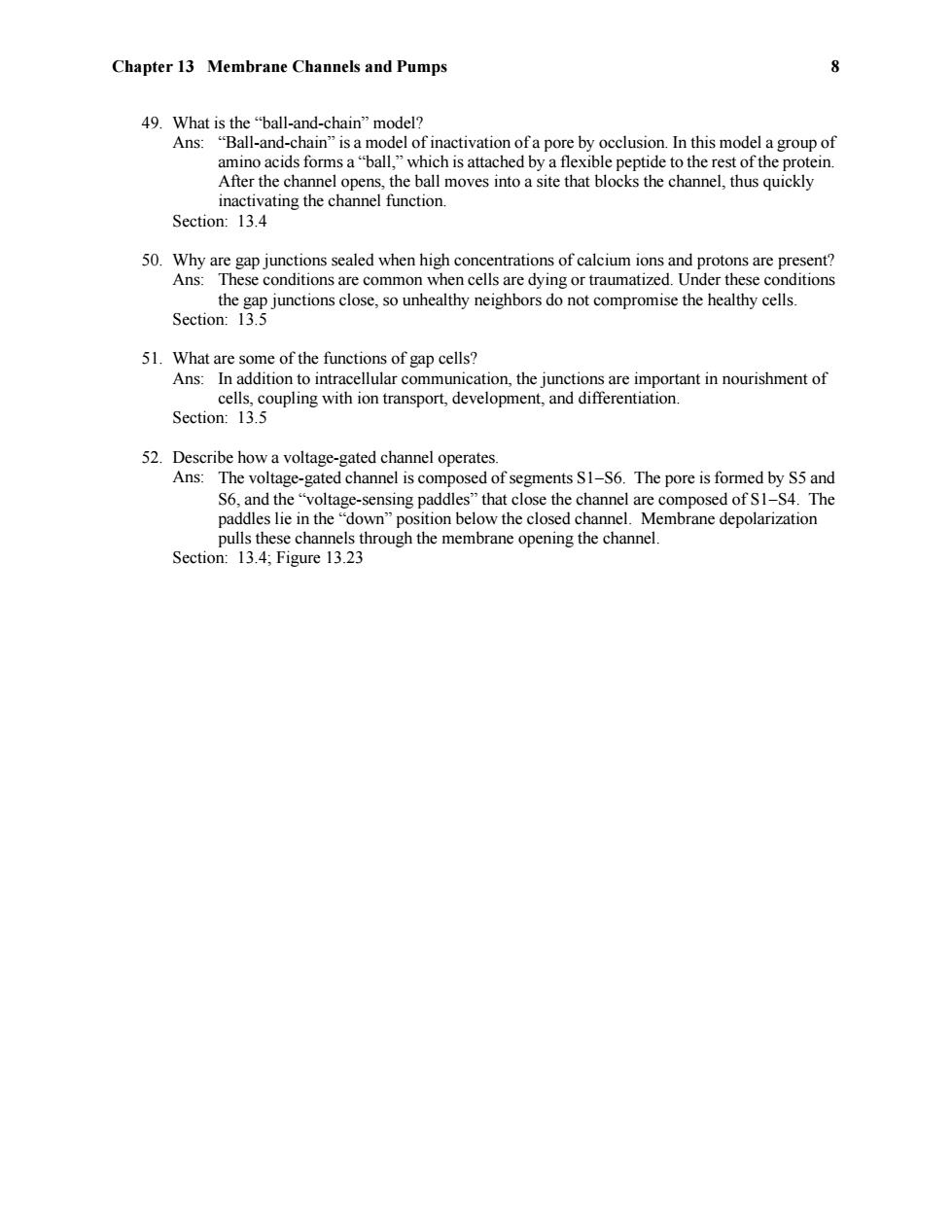正在加载图片...

Chapter 13 Membrane Channels and Pumps 8 49.What is the"ball-and-chain"model? Ans:"Ball-and-chain"is a model of inactivation of a pore by occlusion.In this model a group of amino acids forms a"ball,"which is attached by a flexible peptide to the rest of the protein. After the channel opens,the ball moves into a site that blocks the channel,thus quickly inactivating the channel function. Section:13.4 50.Why are gap junctions sealed when high concentrations of calcium ions and protons are present? Ans:These conditions are common when cells are dying or traumatized.Under these conditions the gap junctions close,so unhealthy neighbors do not compromise the healthy cells. Section:13.5 51.What are some of the functions of gap cells? Ans:In addition to intracellular communication,the junctions are important in nourishment of cells,coupling with ion transport,development,and differentiation. Section:13.5 52.Describe how a voltage-gated channel operates. Ans:The voltage-gated channel is composed of segments S1-S6.The pore is formed by S5 and S6,and the "voltage-sensing paddles"that close the channel are composed of S1-S4.The paddles lie in the"down"position below the closed channel.Membrane depolarization pulls these channels through the membrane opening the channel. Section:13.4;Figure 13.23Chapter 13 Membrane Channels and Pumps 8 49. What is the “ball-and-chain” model? Ans: “Ball-and-chain” is a model of inactivation of a pore by occlusion. In this model a group of amino acids forms a “ball,” which is attached by a flexible peptide to the rest of the protein. After the channel opens, the ball moves into a site that blocks the channel, thus quickly inactivating the channel function. Section: 13.4 50. Why are gap junctions sealed when high concentrations of calcium ions and protons are present? Ans: These conditions are common when cells are dying or traumatized. Under these conditions the gap junctions close, so unhealthy neighbors do not compromise the healthy cells. Section: 13.5 51. What are some of the functions of gap cells? Ans: In addition to intracellular communication, the junctions are important in nourishment of cells, coupling with ion transport, development, and differentiation. Section: 13.5 52. Describe how a voltage-gated channel operates. Ans: The voltage-gated channel is composed of segments S1S6. The pore is formed by S5 and S6, and the “voltage-sensing paddles” that close the channel are composed of S1S4. The paddles lie in the “down” position below the closed channel. Membrane depolarization pulls these channels through the membrane opening the channel. Section: 13.4; Figure 13.23